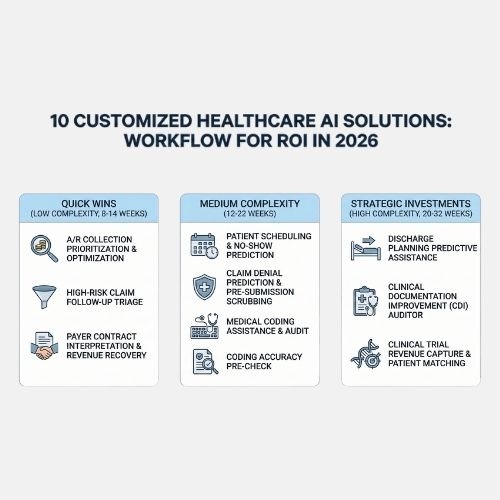The healthcare industry is undergoing a transformation—driven by data and powered by artificial intelligence (AI). One of the most exciting advances in this shift is predictive analytics in healthcare.
By analyzing historical data, identifying patterns, and making accurate predictions about future outcomes, healthcare organizations can improve patient care while increasing efficiency and reducing costs. Let’s explore what predictive analytics in healthcare is, how it works, and how it can deliver long-term success for both patients and providers.
What Is Predictive Analytics in Healthcare?
Predictive analytics in healthcare uses machine learning algorithms, statistical models, and AI-driven tools to examine current and historical data, such as electronic health records (EHR), to predict health outcomes. These insights help healthcare professionals anticipate potential health events—like hospital readmission, disease progression, or treatment responses—before they happen.
By leveraging predictive models, hospitals and clinics can make more informed decisions, allocate resources more effectively, and deliver more personalized care.
Benefits of Predictive Analytics in Healthcare
The benefits of predictive analytics in healthcare go beyond just better data. These systems improve performance, increase profitability, and ultimately save lives. Key benefits include:
- Reduced hospital readmissions by flagging high-risk patients in advance
- Optimized treatment plans using AI insights tailored to individual patients
- Improved chronic disease management through long-term trend analysis
- Lower operational costs by forecasting demand and staffing needs
- Improved patient outcomes through earlier interventions and accurate diagnoses
These are just a few of the many examples of predictive analytics in healthcare improving care at every level—from small clinics to nationwide health systems.
Would you like to know how predictive analytics could work for you? Schedule a free strategy session with our expert to explore how we can bring your vision to life.
How AI Predictive Analytics in Healthcare Works
At the heart of predictive analytics is artificial intelligence (AI). By analyzing thousands of variables across millions of data points, AI predictive analytics in healthcare can uncover patterns that human eyes might miss.
For instance, an AI model can scan EHR data, lab results, and social determinants of health to identify patients likely to develop diabetes or heart disease. These predictive algorithms can also recommend personalized intervention strategies to prevent complications before they arise.
When integrated into clinical workflows, a predictive analytics tool can flag at-risk patients in real time, alerting healthcare professionals to take proactive steps.

Predictive Analytics in Healthcare Examples
Here are some powerful real-world examples of predictive analytics in healthcare:
- Chronic Disease Management: Health systems use predictive models to monitor patients with diabetes, hypertension, and COPD. Algorithms detect subtle signs of decline and suggest timely interventions.
- Hospital Readmission Reduction: Hospitals identify patients most at risk of readmission after discharge and apply targeted care plans to prevent return visits.
- Personalized Treatment Plans: AI tools analyze genetic, behavioral, and clinical data to customize therapies for individual patients.
- Public Health Forecasting: Governments and agencies use predictive analytics to track disease outbreaks and plan public health responses in advance.
- Resource Optimization: Predictive models help hospitals forecast staffing needs, equipment use, and patient volume, reducing waste and saving money.
These examples demonstrate the potential for predictive analytics to reshape both patient care and the business side of healthcare.
Long-Term Impact for Healthcare Organizations
For healthcare organizations, the long-term gains of predictive analytics are clear. With better forecasting and smarter planning, providers can reduce risk, optimize performance, and improve margins.
In today’s competitive landscape, success depends on agility and foresight. Predictive analytics empowers decision-makers to look ahead instead of reacting after the fact.
Whether you’re leading a hospital, managing a clinic, or overseeing a larger healthcare system, using predictive analytics tools will position your organization for sustainable growth and excellence in patient care.
Getting Started with Predictive Analytics
Implementing predictive analytics doesn’t have to be overwhelming. Modern tools and platforms make it easier than ever to integrate into your existing systems. The key is starting with a defined use case—like reducing hospital readmission or managing a specific chronic condition.
Once the initial model proves its value, it can be expanded to other departments and challenges, creating a ripple effect across the organization.
The Future of Healthcare is Predictive
With the increasing availability of data, powerful machine learning algorithms, and more advanced AI tools, predictive analytics in healthcare is becoming essential.
It allows healthcare systems to shift from reactive to proactive care, from generalized treatments to personalized treatment plans, and from isolated decisions to system-wide, informed decisions.
It’s no longer a question of if predictive analytics should be adopted—but how quickly.



